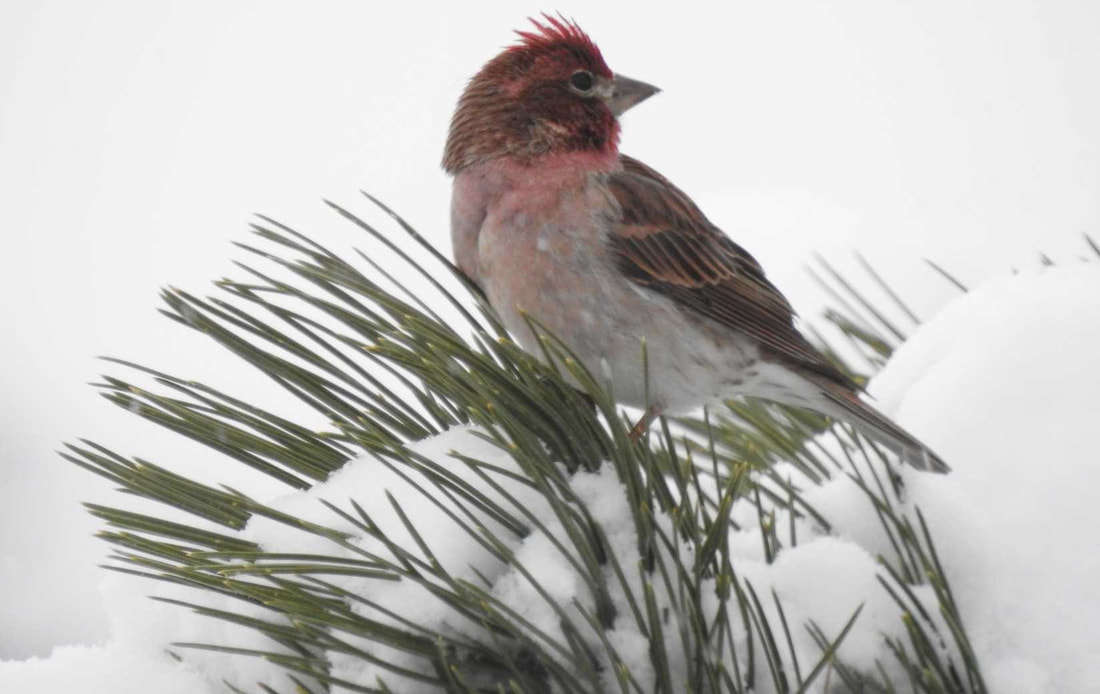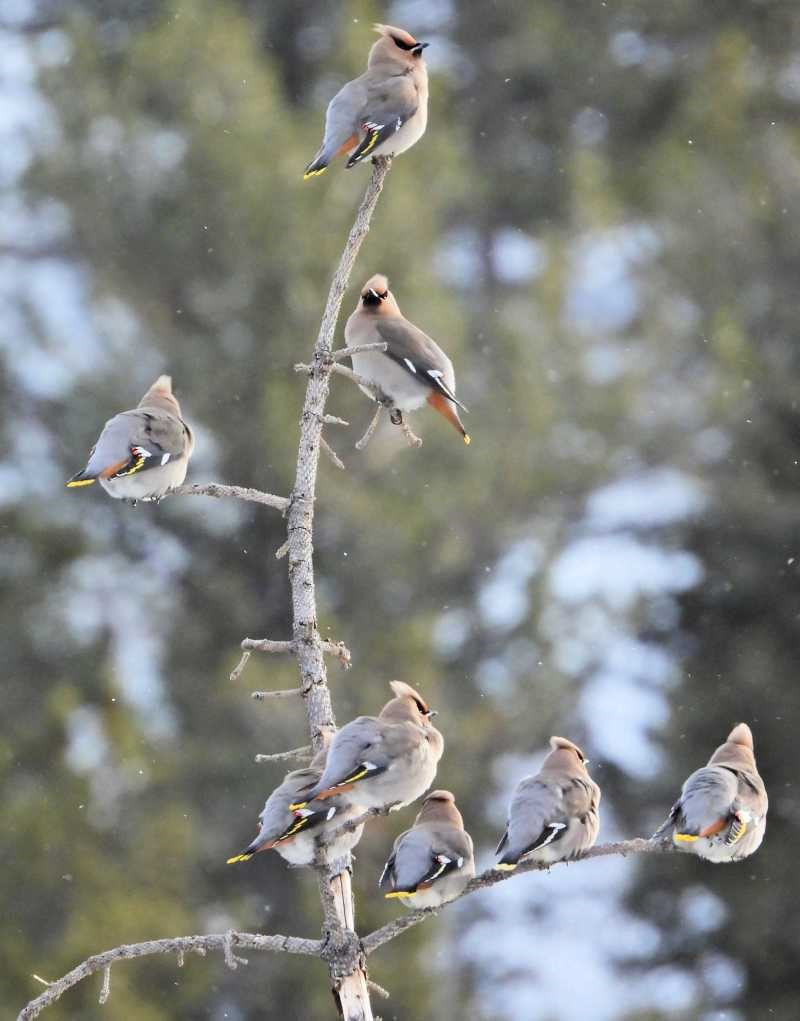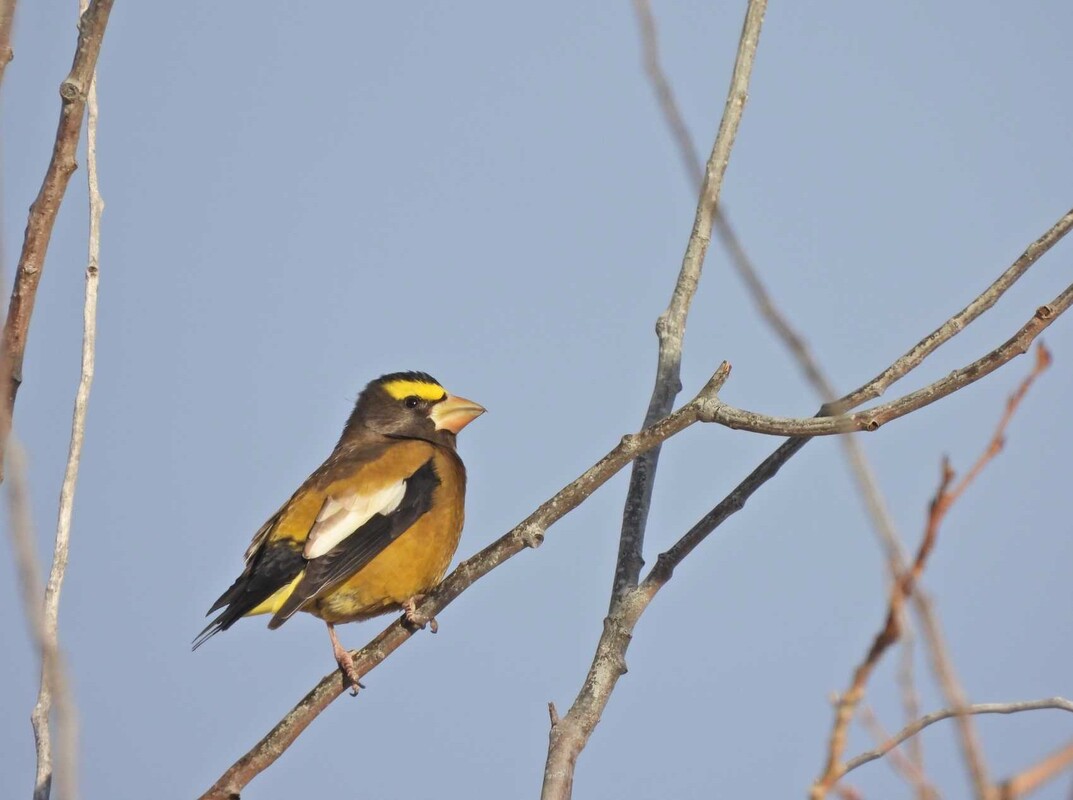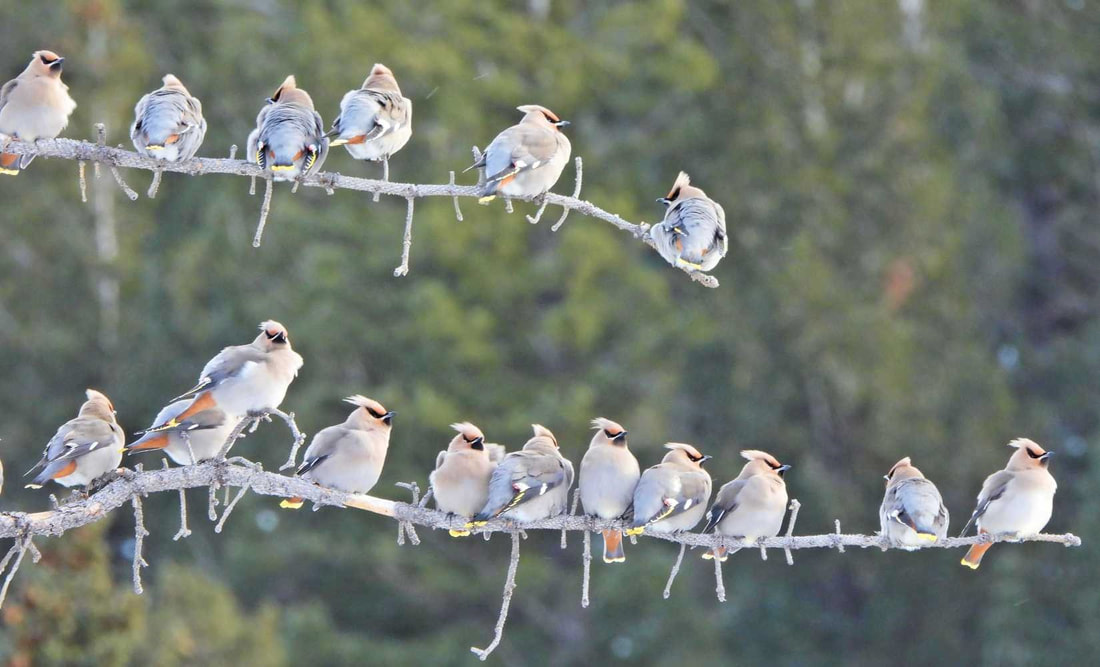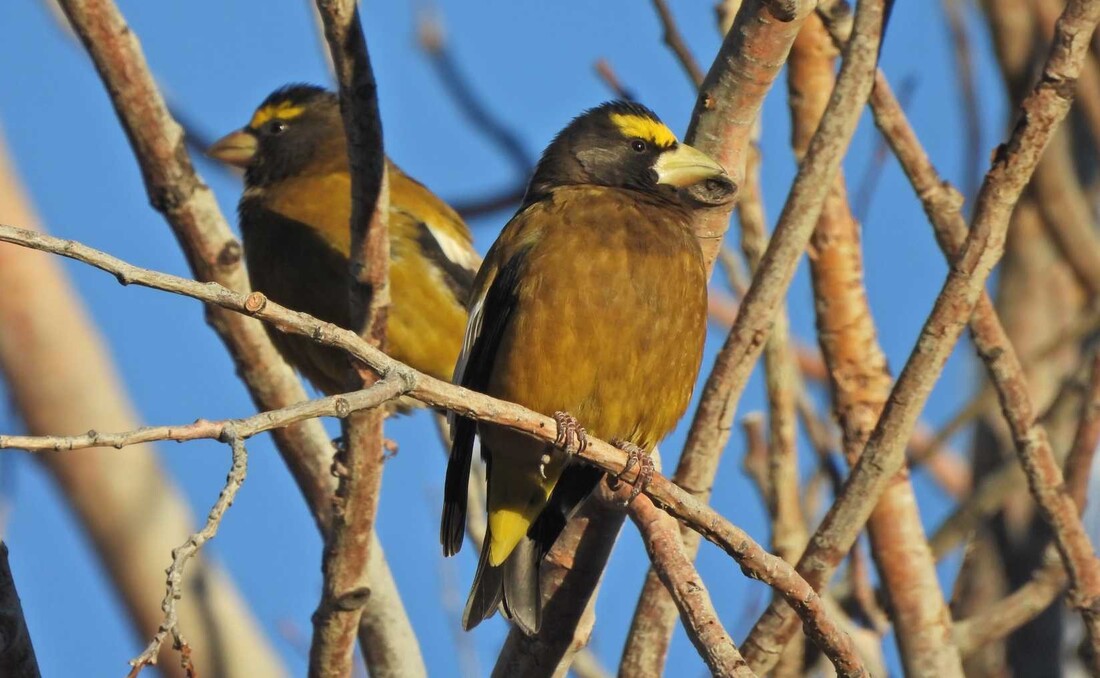|
story and photos by Scott Rashid, director of the Colorado Avian Research and Rehabilitation Institute For many of us, the term “snowbirds” has two meanings. One is the older folks that live in Colorado for the summer and head south to winter in Arizona, Texas, or Florida. The other meaning is the birds that winter in Colorado. Snowbirds (the avian kind) that are found in the mountains can be different species than those found in the foothills and plains. For example, each winter, Clark's Nutcrackers, Pine Grosbeaks, and brown- capped, black and Gray-crowned Rosy-finches move from the alpine tundra of Rocky and sub-alpine and to winter in and around Estes Park, Aspen, Vail, and other mountain towns. Other mountain species including Steller's Jays, Mountain Chickadees, Brown Creepers, Red-breasted Nuthatches, Cassin's Finches, and Pine Siskins may simply move from the mountains which at roughly 7,000-9,000 feet and move to winter at about 5,000 feet. There are species that come down from the north to spend the winter in Colorado every year. These include Rough-legged Hawks, Herring Gulls, Lesser Black- backed Gulls, Ring-billed Gulls, Tree Sparrows, Northern Shrikes, Harris's Sparrows, and Lapland Longspurs. Other species including Evening Grosbeaks, Bohemian Waxwings, Snow Buntings, Red Crossbills, Common Redpolls, Purple Finches, and Snowy Owls, are seen only during some winters. When these species are seen they are frequently in large numbers, in multiple locations throughout the state. When those species are seen in large numbers, it is often considered an eruption. Eruptions occur due to a reduction in resources on their nesting grounds, forcing the birds to move to areas that will sustain them throughout the winter. A few years ago, there was an eruption of Common Redpolls in Colorado. These tiny finches (about the size of a goldfinch or Pine Siskin) came down from the far north and spent the winter here. It seemed like everyone who had a bird feeder was seeing redpolls. That was a wonderful sight. The interesting part of these eruption years is that it is seldom, if ever an eruption of more then a single species. This year happens to be an exception to the rule as Bohemian Waxwings, Cassin's Finches and Evening Grosbeaks are being seen in large numbers. The Bohemian Waxwings (the larger cousin to the Cedar Waxwings, which are seen in Colorado in the spring and summer) are being seen in areas where fruit bearing trees and shrubs have high concentrations of apples, and berries that the birds are feasting upon. There are areas where you can find well over 100 birds in a flock. The birds feel safer in large numbers as it is easier for them to stay protected from predators and find enough food to feed the members of the flock, as there is always a bird or two searching for the next resource heavy location. Evening Grosbeaks and Cassin's Finches are also being seen in large numbers this winter. These finches are being seen at bird feeders feasting upon sunflower seeds. They are easily attracted to your yard if you have large platform feeders filled with sunflower seed where the birds can feed in large numbers. Finches including Evening Grosbeaks and Cassin's Finches feel safer in large numbers and are being seen in flocks of 60 and 70 individuals at a time. As spring approaches (March and April) the waxwings will move north to nest in Canada, Some of the Evening Grosbeaks and Cassin's Finches may remain in Colorado to nest, but many of them will move north into Wyoming and Montana to nest. As spring approaches, many of our summer residents, both avian and human will begin returning to Estes Park to spend the summer. 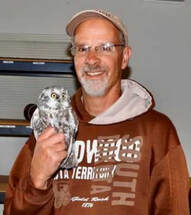 Artist, researcher, bird rehabilitator, author, and director of a nonprofit are only a few things that describe Scott Rashid. Scott has been painting, illustrating and writing about birds for over 30 years. In 2011, Scott created the Colorado Avian Research and Rehabilitation Institute in Estes Park. In 2019, Scott located and documented the first Boreal Owl nest in the history of Rocky Mountain National Park in Colorado. Scott has written and published five books and several papers on a variety of avian species. More information is available on his website: http://www.carriep.org/ The piece of original content was made possible by New Roots Real Estate and the Country Market of Estes Park.
0 Comments
Leave a Reply. |
Categories
All
|
© Copyright 2025 Barefoot Publications, All Rights Reserved

